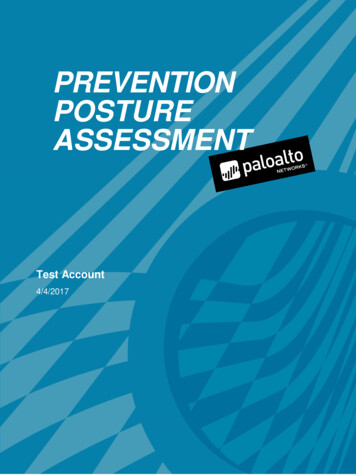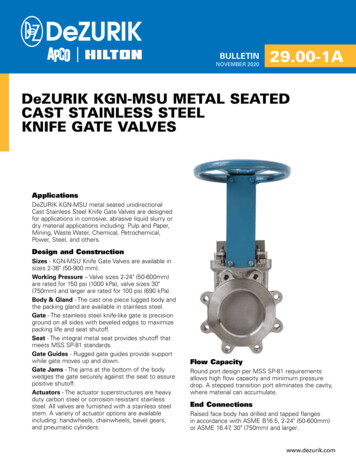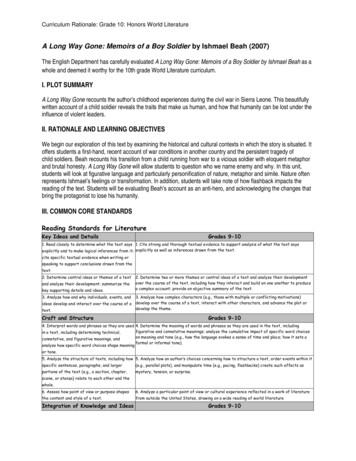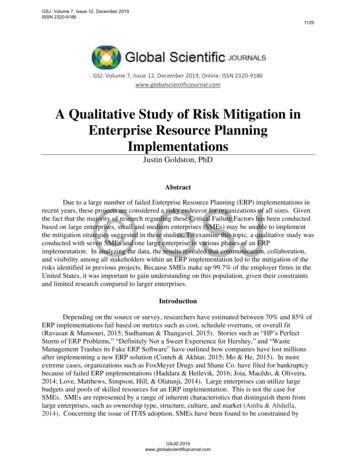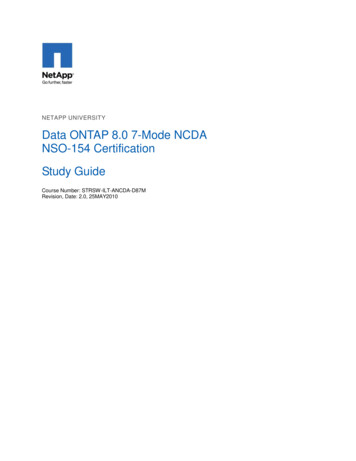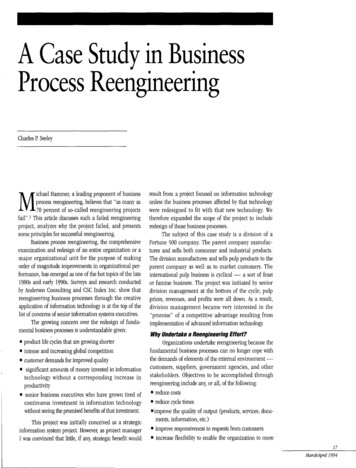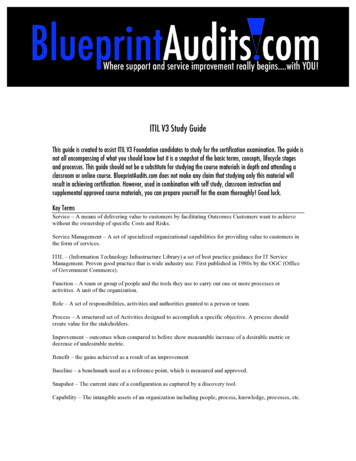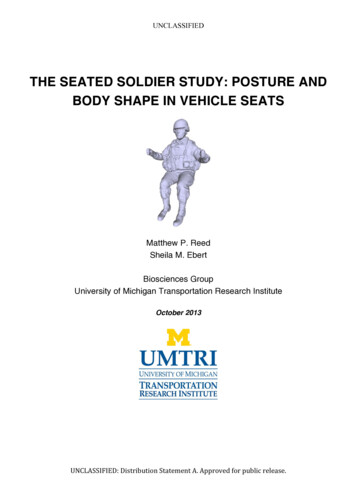
Transcription
UNCLASSIFIED,,THE SEATED SOLDIER STUDY: POSTURE ANDBODY SHAPE IN VEHICLE SEATSMatthew P. ReedSheila M. EbertBiosciences GroupUniversity of Michigan Transportation Research InstituteOctober roved,for,public,release.,
LASSIFIED
UNCLASSIFIEDForm ApprovedOMB No. 0704-0188REPORT DOCUMENTATION PAGEPublic reporting burden for this collection of information is estimated to average 1 hour per response, including the time for reviewing instructions, searching existing data sources, gatheringand maintaining the data needed, and completing and reviewing this collection of information. Send comments regarding this burden estimate or any other aspect of this collection ofinformation, including suggestions for reducing this burden to Department of Defense, Washington Headquarters Services, Directorate for Information Operations and Reports (0704-0188),1215 Jefferson Davis Highway, Suite 1204, Arlington, VA 22202-4302. Respondents should be aware that notwithstanding any other provision of law, no person shall be subject to anypenalty for failing to comply with a collection of information if it does not display a currently valid OMB control number. PLEASE DO NOT RETURN YOUR FORM TO THE ABOVEADDRESS.1. REPORT DATE (DD-MM-YYYY)2. REPORT TYPEOctober 31, 2013Final Report3. DATES COVERED (From - To)September 2011- October 20134. TITLE AND SUBTITLE5a. CONTRACT NUMBERW56HZV-04-2-0001 P00038The Seated Soldier Study: Posture and Body Shape in Vehicle Seats5b. GRANT NUMBER,,6. ,,,,,7. PERFORMING ORGANIZATION NAME(S) AND ADDRESS(ES),University,of,Michigan,,AND ADDRESS(ES),Transportation,Research,Institute,5c. PROGRAM ELEMENT NUMBER9. SPONSORING / MONITORING AGENCY NAME(S) AND ADDRESS(ES)10. SPONSOR/MONITOR’SACRONYM(S)5d. PROJECT NUMBER5e. TASK NUMBER5f. WORK UNIT NUMBER8. PERFORMING ORGANIZATIONREPORTNUMBERUMTRI-2013-13,US Army Tank Automotive Research,Development, and Engineering Center11. SPONSOR/MONITOR’S REPORTNUMBER(S)Warren, MI 48397-5000Issued Upon Submission12. DISTRIBUTION / AVAILABILITY STATEMENT13. SUPPLEMENTARY NOTES14. ABSTRACTDesigning vehicles for the safety and comfort of occupants requires detailed information on posture, position, and body shape. This reportpresents the methods and results of a study of soldiers as drivers and passengers in vehicle seats. A total of 257 male and 53 femalesoldiers were measured at three Army posts while minimally clad, wearing the Advanced Combat Uniform (ACU), with the addition ofpersonal protective equipment (PPE), composed of the Improved Outer Tactical Vest (IOTV) and Advanced Combat Helmet (ACH), andwith encumbrance (ENC) simulating the gear of either a rifleman or SAW-gunner. Standard anthropometric data, such as stature and bodyweight, were recorded. Participants were measured as either drivers or crew. Five driver workstation configurations (packages) wereproduced in a vehicle mockup by varying the steering wheel position relative to the pedals. The participants adjusted the seat to obtain acomfortable driving posture. The three-dimensional locations of body landmarks were measured using a FARO Arm coordinate digitizer.In the crew conditions, the experimenters varied the seat height and back angle and conditions included a simulated protective footrest. Awhole-body laser scanner was used to record body shape at each garb level. A statistical analysis of the body landmark data was conductedto obtain models to predict soldier posture as a function of vehicle factors, such as seat height, and soldier attributes, such as stature, andgarb level (ACU, PPE, or ENC). Driver posture was strongly affected by steering wheel position and crew posture by seat back angle.Adding PPE and ENC resulted in more-upright postures, but the effects on spine posture were small. Statistical models of both seated andstanding body shape were developed from the scan data, including the effects of PPE and ENC on space claim. The effects of ENC onspace claim were largely independent of body size. The results of this study have broad applicability for the design and assessment ofmilitary vehicles. Approved for public release.15. SUBJECT TERMSAnthropometry, Posture, Vehicle Occupants, Statistical Shape Analysis, Safety16. SECURITY CLASSIFICATION OF:17. LIMITATIONOF ABSTRACT18. NUMBEROF PAGESa. REPORTb. ABSTRACTc. THIS PAGE19a. NAME OF RESPONSIBLEPERSON M.P. Reed19b. TELEPHONE NUMBERTBDTBDTBD(include area code)(734)936-1111Standard Form 298 (Rev. 8-98)Prescribed by ANSI Std. Z39.18UNCLASSIFIED
UNCLASSIFIEDACKNOWLEDGMENTSThis work was supported by the Automotive Research Center, a U.S. Army Center of Excellencefor Modeling and Simulation of Ground Vehicles led by the University of Michigan.This research would not have been possible without the contributions of a large number ofpeople. We would like to thank the soldiers who participated in the study, providing valuabledata that will improve safety and accommodation for the next generation of soldiers. The projectwas conducted in close collaboration with personnel from the U.S. Army Tank AutomotiveResearch, Development and Engineering Center (TARDEC). Katrina Harris was the primarytechnical point of contact throughout the study and helped to guide the formulation andexecution of the study plan. We are also grateful to the following TARDEC personnel whoprovided valuable assistance: Risa Scherer, Holly Howard, Harry Zywiol, Stacy Budzik, andJennifer Ammori. Special thanks to the points of contact at the Army posts, whose efforts werecritical in obtaining access to facilities: John MacArthur (Joint Base Lewis-McChord), FredCorbin (Fort Hood), and Jim Parks (Fort Campbell). Valuable input on the study plan wasreceived from Brian Corner, Steve Paquette, and Todd Garlie of NSRDEC, and from JoeMcEntire of USAARL.At UMTRI, important contributions were made by Jingwen Hu, Jonathan Rupp, Carl Miller,Nathaniel Madura, Brian Eby, Quentin Weir, Charlie Bradley, and Laura Malik. The Anthrotechteam who gathered the data in the field were led by Bruce Bradtmiller and Belva Hodge. Theoutstanding data collection personnel were Mike Mucher, Mark Breza, Lisa Ann Piercy, TravisHotaling, Tatiana Lurie, and Christina Smith. We also thank the student research assistants whoworked tirelessly to process and extract data from the laser scans, including Alexis Baker,Christian Calyore, Olivia DeTroyer, Tiffany Fredrick, David Hayashi, Danielle Hedden, HuibinHu, Jordan MacDonald, Mollie Pozolo, Rachel Palmer, Sarah Scholten, Ryan Warner, MikhailWise, and Lindsay Youngren.Finally, we thank Anna Stefanopoulou, Director of the ARC, for her support of this pproved,for,public,release.,
UNCLASSIFIEDCONTENTSACKNOWLEDGMENTS . vEXECUTIVE SUMMARY . 2INTRODUCTION . 3METHODS . 6RESULTS . 42APPLICATIONS . 77DISCUSSION . 79REFERENCES . 82APPENDIX A. Consent Form. . 85APPENDIX B. Demographics Form . 87APPENDIX C. Subject Interaction Scripts . 89APPENDIX D. Points Digitized on Scans . 93APPENDIX E. Techniques for Measuring and Representing Posture . 101APPENDIX F. Standard Anthropometry: Summary of Measures . 113UNCLASSIFIED
UNCLASSIFIEDEXECUTIVE SUMMARYThis report presents the methods and results of a study of soldiers as drivers and passengers invehicle seats. A total of 257 male and 53 female soldiers were measured at three Army postswhile minimally clad, wearing the Advanced Combat Uniform (ACU), with the addition ofpersonal protective equipment (PPE), composed of the Improved Outer Tactical Vest (IOTV)and Advanced Combat Helmet (ACH), and with encumbrance (ENC) simulating the gear ofeither a rifleman or SAW-gunner.Standard anthropometric data, such as stature and body weight, were recorded. Participants weremeasured as either drivers or crew. Five driver workstation configurations (packages) wereproduced in a vehicle mockup by varying the steering wheel position relative to the pedals. Theparticipants adjusted the seat to obtain a comfortable driving posture. The three-dimensionallocations of body landmarks were measured using a FARO Arm coordinate digitizer. In thecrew conditions, the experimenters varied the seat height and back angle, and conditionsincluded a simulated protective footrest. A whole-body laser scanner was used to record bodyshape at each garb level in both seated and standing postures.A statistical analysis of the body landmark data was conducted to obtain models to predict theposture of any soldier as a function of vehicle factors, such as seat height, soldier attributes, suchas stature, and garb level (ACU, PPE, or ENC). Driver posture was strongly affected by steeringwheel position and crew posture by seat back angle. Adding PPE and ENC resulted in moreupright postures, but the effects on spine posture were small. Statistical models of both seatedand standing body shape were developed from the scan data, including the effects of PPE andENC on space claim. The two ENC kits added essentially constant offsets to dimensionsmeasured at the ACU level, indicating that the effects of new kits on space claim can be assessedusing measurements on relatively few subjects. The results of this study have broad applicabilityfor the design and assessment of military vehicles. Near-term uses include the layout of driverworkstations, development of safer and more accommodating squad seating, and thedevelopment of new physical and computational surrogates to represent soldiers for ergonomicsand safety assessments.UNCLASSIFIED,2,
UNCLASSIFIEDINTRODUCTIONThe design of seats and interiors for a wide variety of vehicles has benefited from detailed dataon the sizes, shapes, and postures of the intended occupants. Beginning in the 1950s, data onoverall body dimensions, such as stature (erect standing height) and body segment lengths wereused to create design tools (Dempster, 1955). Beginning in the early 1960s, the Society ofAutomotive Engineers (now SAE International) standardized a two-dimensional template and athree-dimensional, weighted manikin (known as the H-point machine) for measurement andlayout of seats and interiors. These tools in SAE Recommended Practice J826 have been onlyslightly modified in the intervening years and are still used globally as a central component ofautomotive design for occupant accommodation and comfort.The mid-1960s saw the introduction of the first statistical, population-based model of occupantaccommodation, the eyellipse. The eyellipse describes the distribution of driver eye locations ina vehicle as an ellipse (or ellipsoid in three dimensions) based on an underlying multivariatenormal approximation (Meldrum 1965). The eyellipse is notable because it encapsulates threeimportant influences on occupant posture: body size (the eyes of taller people tend to be higherand more rearward in the vehicle), vehicle layout (package variables such as seat height), anddriver posture preference unrelated to body size. Since the 1960s, population accommodationmodels with these characteristics have been introduced in SAE Recommended Practices fordriver-selected seat position, head location, maximum reach, truck driver shin/knee clearance,and truck driver abdomen clearance (SAE International 2012).With the widespread introduction of computer-aided design (CAD) software in the 1980s and90s, digital human figure models (DHMs) began to be used for ergonomic assessments anddesign of vehicle interiors and seats, particularly for driver workstation layout (Chaffin 2001).DHM software represents humans by an anthropomorphic, three-dimensional figure that can beadjusted via manual or automated means to replicate a wide range of human postures. Earlymodels used simple ellipsoids to represent body segments, but more recent software versionsinclude smooth-skinned figures for both men and women with a range of appearance options.DHM software packages widely used in industry include RAMSIS and Jack. Many CAD andintegrated engineering analysis packages now include human figures, such as CATIA andPro/Engineer.The development of computer manikins for vehicle interior design and assessment exposed twoimportant knowledge gaps. First, human body shape varies widely, and representing the scopeof body shape variability across the range of feasible postures has been challenging. Mostwidely used manikins rely on relatively simple anthropometric scaling, in part because methodsfor predicting and representing three-dimensional (3D) body shape on manikins have not beenwidely available. Second, use of a manikin requires the generation or specification of aparticular static posture or motion appropriate to the task to be analyzed. For example, accurateprediction of driving posture for a particular manikin is needed to ensure that the resultinganalysis of clearance, vision, or reach is meaningfully accurate.Laser scanning technology has made available large datasets on human body shape. TheCivilian American and European Surface Anthropometric Resource (CAESAR) study was thefirst large-scale dataset that has been widely available (Robinette et al. 2002), but many otherUNCLASSIFIED,3,
UNCLASSIFIEDdatasets are now available based on national samples, e.g., SizeGermany, SizeUK, SizeChina,etc. Three important barriers have limited the application of these data to commercial manikins.First, many of the datasets have been constrained by restrictive licenses that have limitedcommercial application. Second, although the technology to generate figure models based onsingle scans has been available for at least a decade, statistical models allowing a wide range ofbody sizes to be generated have not been available. The first such model was presented in 2003(Allen et al. 2003), but widespread applications have lagged due both to technical hurdles andlicensing issues. Third, the large anthropometric surveys, such as CAESAR, have typicallygathered data in only a few postures, none of which are directly related to vehicle interior design.Some studies have gathered data only on standing postures, while others have included one or afew unsupported seated postures. Applying such data or statistical models based on such data tovehicle environments requires extrapolation to predict body shape change in seating situationswith back support. Moreover, although many previous studies have been motivated by appareldesign issues (e.g., SizeUSA), few have examined the effects of apparel on posture and bodyshape.Driving posture prediction has been part of human modeling software for at least 25 years,reflecting the early DHM adoption in vehicle design. RAMSIS was introduced with a data-basedmodel for predicting driving posture using an optimization algorithm (Seidl 1997). The occupantpackaging toolkit in the Jack software uses posture prediction algorithms developed at theUniversity of Michigan, as does the vehicle occupant accommodation module in CATIA. Thesealgorithms are based on measurements of hundreds of drivers with widely varying body size in awide range of vehicle packages, ranging from low-seat-height sports cars to the largestcommercial trucks. Both the RAMSIS and University of Michigan approaches use differentmodels for different vehicle classes, such as passenger cars or heavy trucks, reflecting the factthat the dimensions, constraints, and user populations are different.In some ways, the tools and technology available for automotive development have moved aheadof those used for military vehicle development. In the past two decades, new seatingaccommodation (Flannagan et al. 1998) and eyellipse (Manary et al. 1998, Reed 2011) modelswere developed at UMTRI and implemented in SAE Recommended Practices. These newmodels for driver accommodation modeling (such as SAE J941 and J4002) have not been widelyused for military vehicles, in part because the military occupant population differs meaningfullyfrom the civilian populations for which the SAE models are intended. In the past decade, newmethods for optimizing passenger car and truck layout for driver accommodation have beendeveloped (Parkinson et al. 2005; Parkinson and Reed 2006; Parkinson et al. 2007) but soldierspecific data are needed to apply these methods to Army vehicles.Occupant package layout in military vehicles has been primarily based on the simpledimensional guidelines presented in MILSTD-1472, which recommend a set of linear clearancedimensions. These guidelines are difficult to interpret or to apply in an environment withadjustable seats. Importantly, the currently available guidelines and tools do not take intoaccount the effects of body armor or other body-borne gear on occupant posture, position, orpreference. That is, no current tools provide quantitative information on the distributions ofpostures or clearance requirements that can be expected for diverse population of occupantswearing battle gear.UNCLASSIFIED,4,
UNCLASSIFIEDBased on this assessment of the current state of the art, the present study was developed with thefollowing objectives:1. Gather detailed data on the postures of soldiers with a wide range of body sizes sitting inmilitary vehicle seats as drivers and passengers with and without protective equipment andwith and without protective footrests.2. Gather detailed data on the position and space requirements for body armor and other gear inboth standing and seated postures.3. Develop data-based tools to represent the postures, positions, and body size (space claim) forsoldiers as drivers and passengers in tactical vehicles as a function of occupant and vehiclecharacteristics.4. Provide quantitative data on the locations of protective equipment relative to the soldier andvehicle seat for use in human modeling and blast event simulation.To accomplish these objectives, a detailed study plan was developed with coordination amongU-M, the Army, and Anthrotech, Inc., a company specializing in anthropometric data collectionand analysis. Adjustable mockups of driver and crew (squad) seating environments were created.A team of six staff trained in anthropometry methods traveled to three Army bases to recruit andmeasure soldiers. Body landmark locations were measured as the soldiers sat in the twomockups, and three-dimensional body shape was captured in both standing and seated posturesusing a whole-body laser scanner capable of high-resolution surface measurement. Body shapedata were obtained with the soldiers minimally c
Transportation,Research,Institute,, ACRONYM(S) UMTRI-2013-13 9. SPONSORING / MONITORING AGENCY NAME(S) AND ADDRESS(ES) 10. . Adding PPE and ENC resulted in more-upright postures, but the effects on spine posture were small. Statistical models of both seated and . Steve Paquette, and Todd
